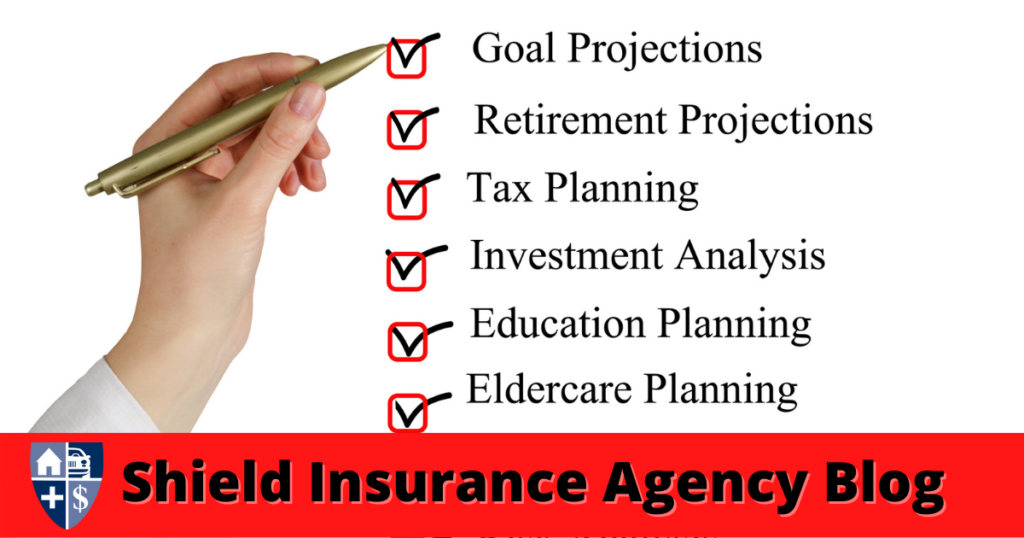US Bank.com | October 11, 2022 | Shield Life Insurance | Financial Checklist
An end-of-the-year financial checklist is a good opportunity to make sure you’re still on track toward your financial goals.
Sometimes it feels like a year can disappear in the blink of an eye. When you look back over the previous 12 months, you might be surprised at what may have changed for you, whether that’s in terms of the economy at large, your individual finances, or your personal circumstances.
That’s why the end of the year is a good time to review your accounts and investments and make smart adjustments for the new year. Also, with tax season around the corner, reviewing your portfolio and personal finances now could potentially help reduce your tax liability.
Use this year-end financial checklist as a guide.
1. Review your financial plan
Think about what you spent money on this year, and how much. Whether it was home improvements, a vacation, or boosting a loved one’s college savings, did you achieve your family’s financial goals? Or did you put some on hold in favor of other priorities that came up during the year? Do you foresee having to make any large purchases in the next year?
Also, consider what changed in your life this year. Births, deaths, marriage, divorce, and retirement can all have an impact on both your personal finances and your strategic financial plan.
Financial planning tips
- Be honest with yourself. If money was tight, or if you had a surplus, this is a good time to adjust your spending and priorities.
- Use a financial professional as a sounding board. An outside perspective is helpful when reviewing short- and long-term family financial goals. A financial professional might be able to make suggestions you haven’t thought about.
2. Review your employee benefits
It’s tempting to just keep your employee benefits humming along in the background, but reviewing them yearly can make a big difference. Look at your employer-sponsored 401(k) or IRA account contributions for the year. Did you max out your contributions? If not, did you at least contribute as much as the company match?
For the 2022 tax year, the maximum 401(k) contribution is $20,500, plus an additional $6,500 if you’re 50+. The maximum IRA contribution is $6,000, plus $1,000 if you’re 50+. If you’re not maxing out your contribution, consider at least increasing it on an annual basis.
Don’t forget to pay attention to your allocations. Are you happy with the ratio of stocks, bonds and other assets, or do you need to rebalance?
Other employee benefits to review and adjust—with a financial professional, if you like—include corporate stock options and other incentive plans (restricted stock, restricted award units, etc.); health, life and disability insurance coverage; and your flexible spending account (FSA).
And don’t forget your health spending account (HSA), if you have one. For the 2022 tax year, the maximum HSA contributions are $3,650 for individuals, $7,300 for families, and an additional $1,000 for individuals age 55+.
Finally, are your beneficiaries up to date? Can you also designate a successor beneficiary? You work hard for your employees’ benefits, so be sure they end up where you want them.
Employee benefit tips
- Calculate your remaining health insurance deductible. Can you accelerate or postpone medical treatments?
- Use up your FSA. There are some qualified products you may not have thought of, from contact lens solution to bandages, that you can purchase with those funds.
3. Conduct a year-end tax review
Tax Day might not be until April 15, but it’s always a good idea to get a head start on preparation. For example, did you experience any life transitions (marriage, births, divorce, deaths, retirement, etc.) in the last year that could affect your tax withholding status?
Based on your anticipated income for next year, would deferring or accelerating any bonuses, property sales, other taxable transactions, deductible expenses, charitable gifts, etc., benefit you from a tax perspective? A financial professional can help you review your options.
Tax review tip
- Explore tax loss harvesting. If you had investments that lost money, tax loss harvesting can help you reduce your tax liability. There are strict rules around how this is executed, so to avoid potential penalties, consider talking to a financial or tax professional before using this strategy.



















































